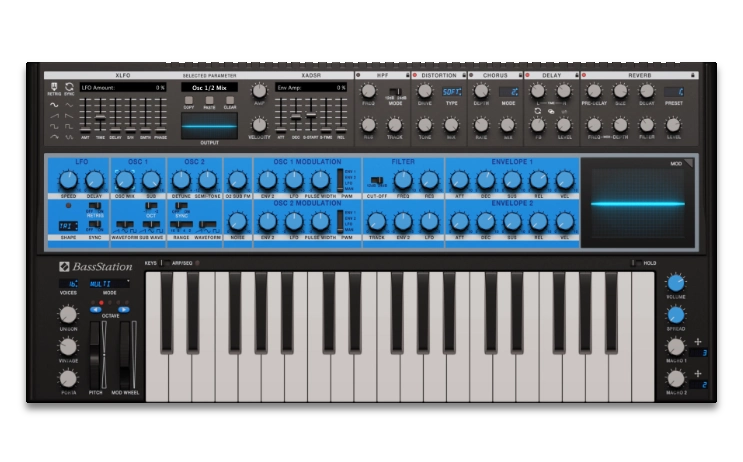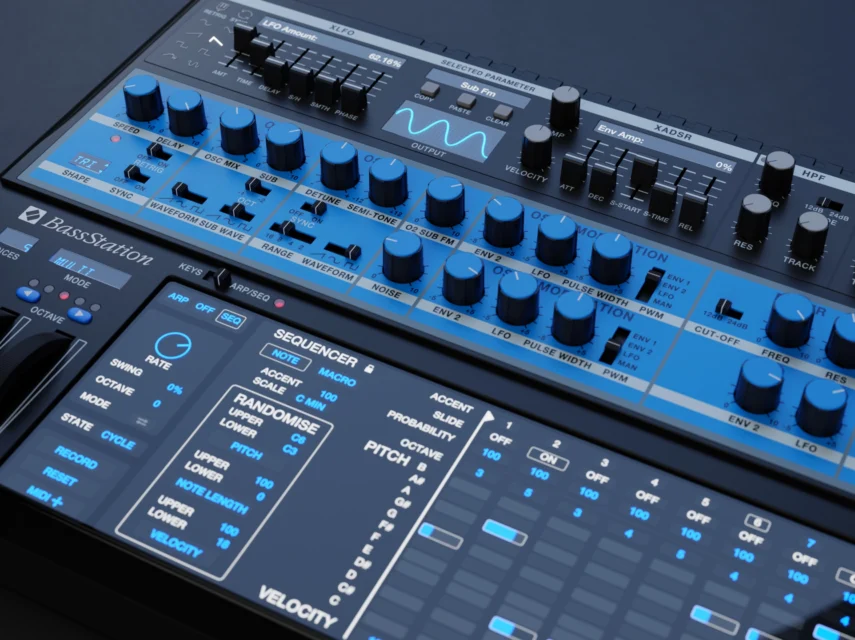January 28, 2025
by GForce Software
Intro / Inspiration
In this article, I’ll walk you through how I created the intro demo for GForce Bass Station. Inspired by French House artists like Daft Punk and Justice, the track pairs jazzy chords with a funk-inspired bassline and also highlights Bass Station’s sequencer and arpeggiator. You can hear the demo in action here:
Chords
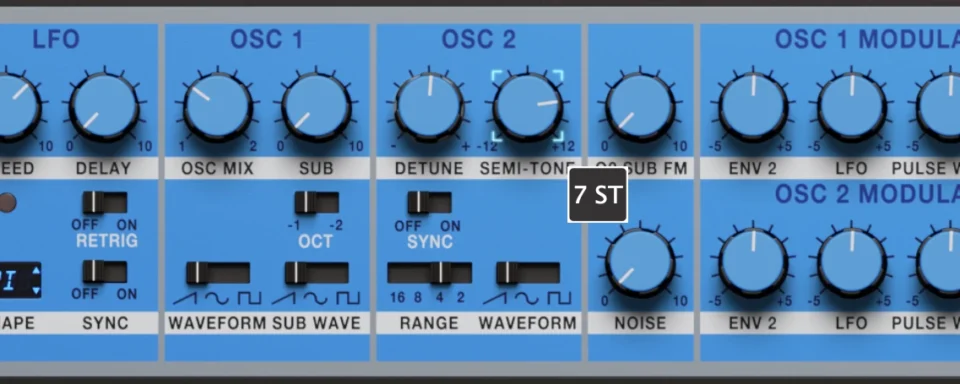
I started by writing a jazzy chord progression and then creating a polyphonic Bass Station patch to serve as the demo’s backbone. The chord progression alternates between major and minor tonalities, giving it a sophisticated, ear-catching sound. I created a polyphonic patch that uses two sawtooth oscillators, with Oscillator 2 pitched up 7 semitones to add subtle harmonies that complement the jazzy chords. I set the Osc Mix knob to keep Oscillator 2 quieter, making the effect more subtle. A touch of filter resonance adds some high-end brightness to the patch, and plenty of Bass Station’s onboard chorus gives the patch some stereo width.
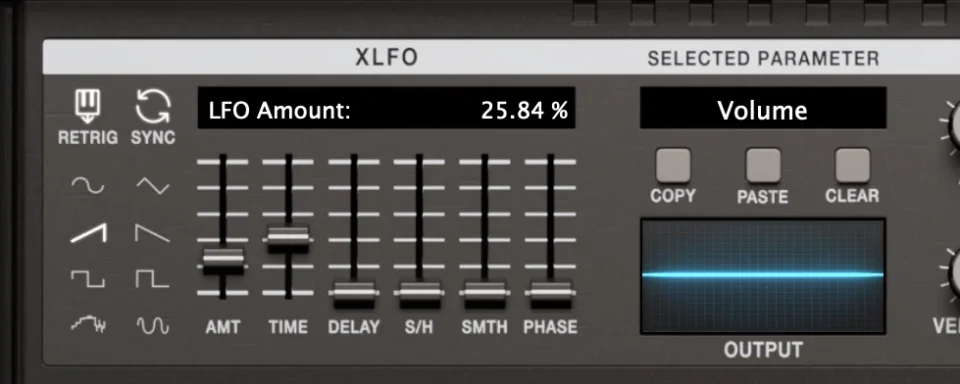
Nearly every parameter in Bass Station features an XLFO and an XADSR, independent LFOs and envelopes that offer immense modulation flexibility. I used Bass Station’s XLFO feature on the volume to create a 1/4 note pumping effect, a hallmark of French House. I used the Saw Up wave shape, set Time to synced 1/4 notes, and set Amount to around 25%. This preset is called French Pump, and is available for download at the end of this article.
Bassline
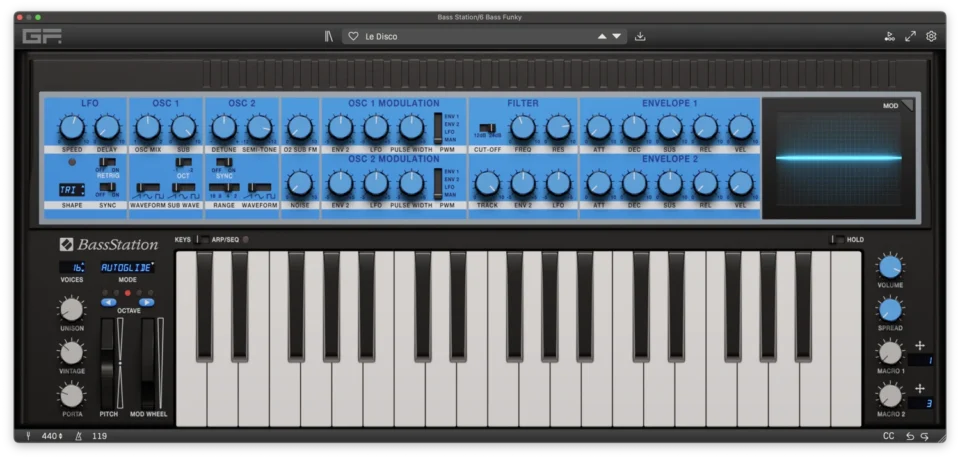
Next, I sequenced a bassline inspired by slap-style funk bass guitar, featuring octave jumps and smooth gliding legato notes. Shortening some of the note lengths helped bring out a punchy, funky sound while overlapping legato notes triggered the glide to slide between some of the higher notes. Once I had a pattern that I liked, I duplicated it across eight bars and adjusted it to follow the chord progression.
The bassline uses the Bass Station factory preset Le Disco, an aggressive-sounding patch with oscillator sync, high filter resonance, and Bass Station’s onboard overdrive effect. The real magic comes from the interaction between the filter and overdrive. I fine-tuned the filter cutoff to find the sweet spot—settling at 376 Hz—where the resonance sounds aggressive but not harsh. In the Overdrive section, I set the Tone to 79%, rolling off some of the high-end introduced by the resonant filter, resulting in a smoother sound.
Sequencer
I wanted the demo to showcase Bass Station’s sequencer, and the chord progression’s shift from major to minor meant I had to limit the notes to fit both tonalities. A simpler sequencer pattern with fewer notes worked better musically. I ended up with the following sequence, which is triggered using an F note to transpose the pattern up 5 semitones. This preset is called Neon Riff.

The funky bassline introduced earlier sounded too busy alongside the sequence, so I replaced it with a simpler, deep filter sawtooth bass playing sustained notes for this section. This created more space for the sequencer track to stand out.
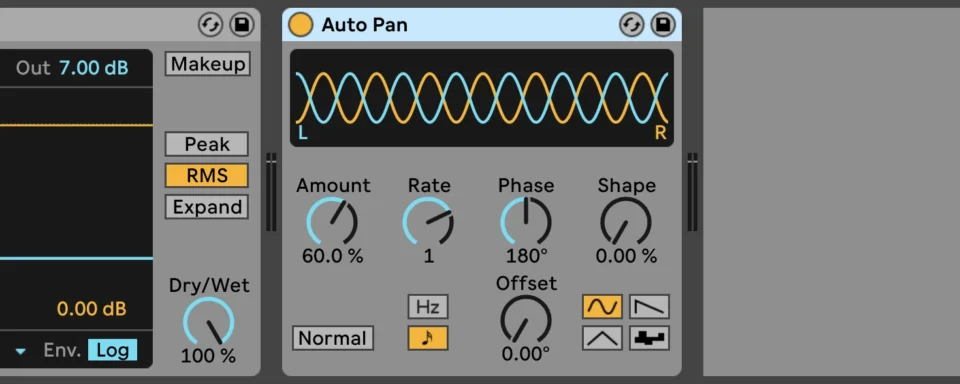
To add subtle movement, I used Ableton Live’s Auto Pan effect on the sequencer track. The Auto Pan gradually pans the sound over four beats, with the amount set to 60%—enough to add interest without distracting.
Lo-Fi Chords
Halfway through the demo, there’s a breakdown without drums to create contrast from the busier sections of the demo. The same chord progression plays here but with a different preset: the Cassette Chorus patch from the factory presets.
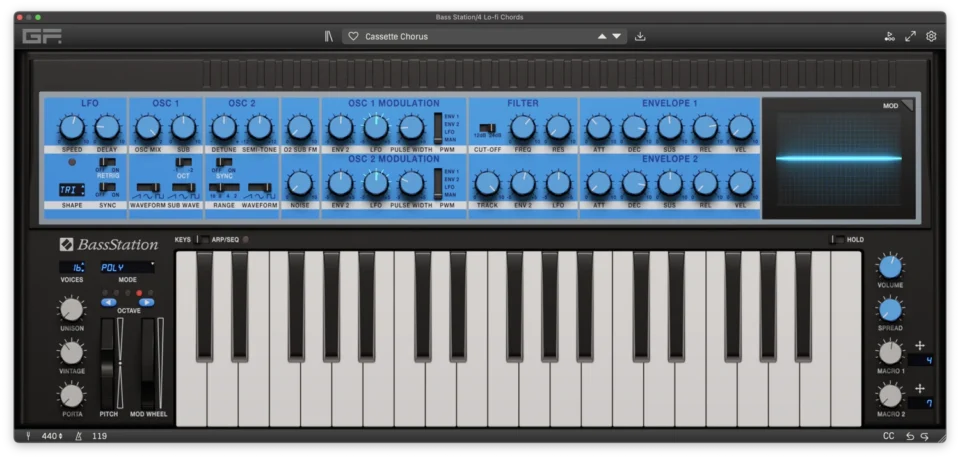
This patch has a woozy, lo-fi character. The sound is built using two layers of pitch modulation: standard LFO modulation for Oscillator pitch in the Osc 1/2 Modulation sections, and random pitch modulation from the XLFO on Osc 2 Detune. I used the Random XLFO wave shape with a fast rate to emulate tape-like pitch fluctuations. I also used Bass Station’s High-Pass Filter effect (HPF) in this patch to cut everything below 300 Hz, leaving a bright, thin tone with no low-end muddiness. The Chorus effect gives it a lush, shimmering quality that adds stereo width.
Arpeggiator
The descending arpeggios towards the end of the demo follow the same chord voicings as the main progression with a fast 1/16th note triplet rate for the arpeggiator. To keep the sound dynamic, I applied the filter’s XLFO with a slow 2/1 rate and a low amount of 10%. This opens and closes the filter every two bars, adding a movement that prevents the arpeggios from sounding too robotic. This preset is called Prismatic Falls, and I also applied the same Auto Pan effect as on the sequencer.
Outro
The outro brings all of the demo’s sounds together; the sequencer, arpeggios and lo-fi chords are all reintroduced for a big finish. To give each element its own space, I panned the sequencer and lo-fi chords left and right for the outro only. I also reduced the volume of the arps in the outro to make room for the extra tracks.
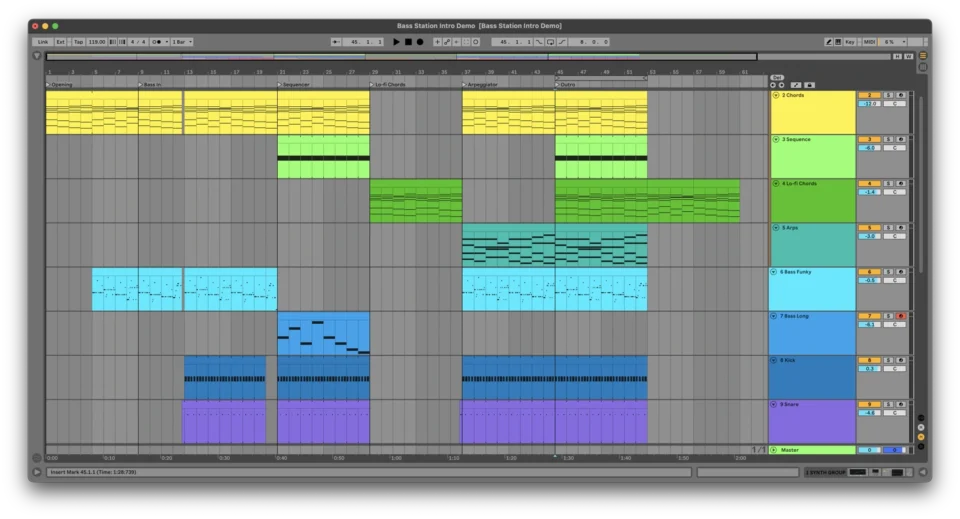
Mixing
The demo mix is nice and simple, I focused on getting the sounds right within Bass Station and then added an EQ and compressor to most tracks. When EQ’ing, I try to cut one frequency and boost another to give each sound its own space in the mix.
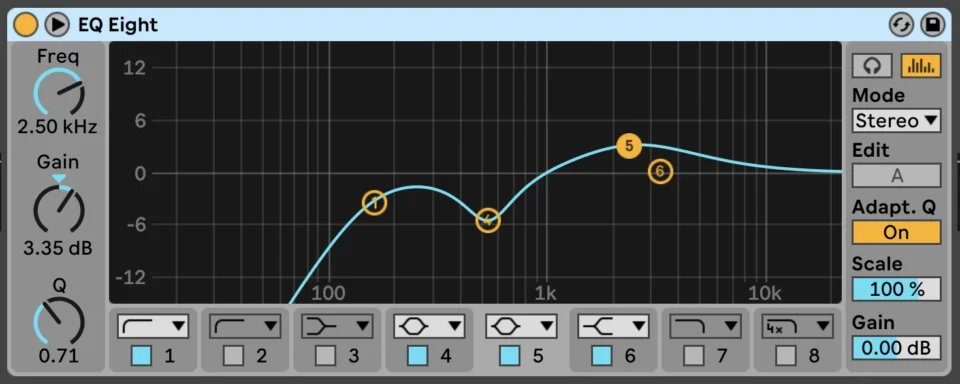
I grouped the synths (excluding the bass) and applied a low-cutting, treble-boosting EQ to separate them from the low-end. A Glue Compressor tightened the dynamics, and a sidechain compressor—triggered by the kick drum—added the classic French House “pumping” effect. Below I’ve bounced two mixes—one with the sidechain compression, and another without. Compare how prominent the kick is in both mixes. With sidechain, everything ducks when the kick hits, making it pop out of the mix much more clearly.
Where can I find the Bass Station Patches?
The patches used in the demo can be downloaded at [Bass Station Extra Presets downloads].
More Info about Bass Station
